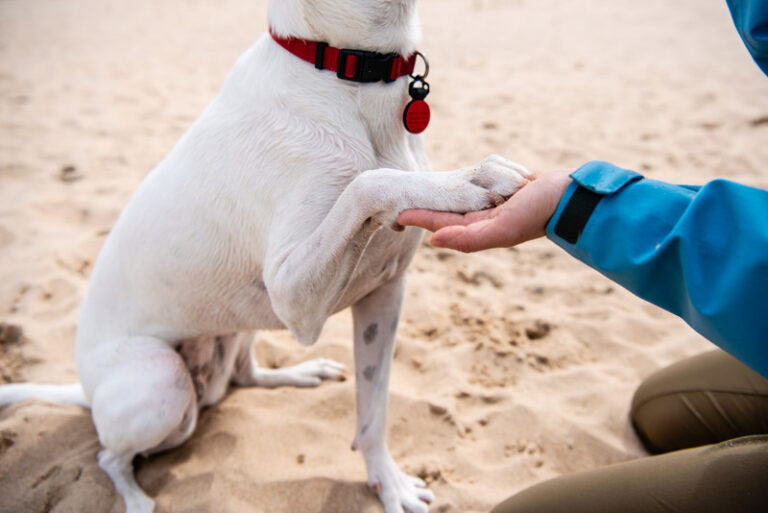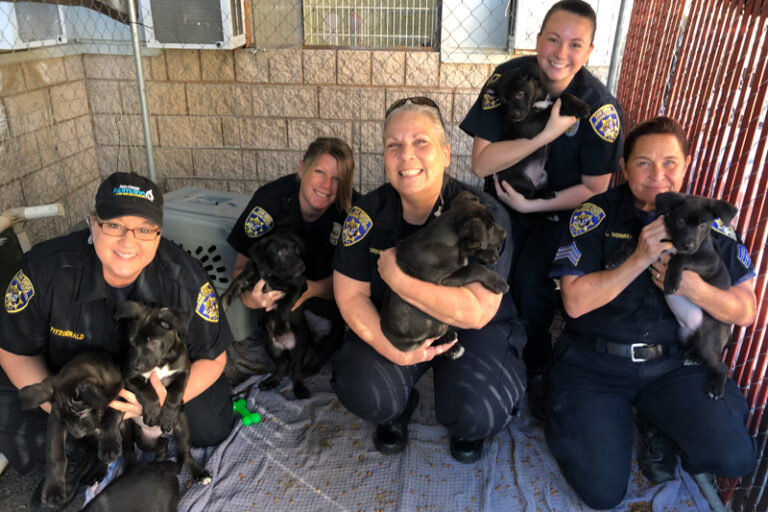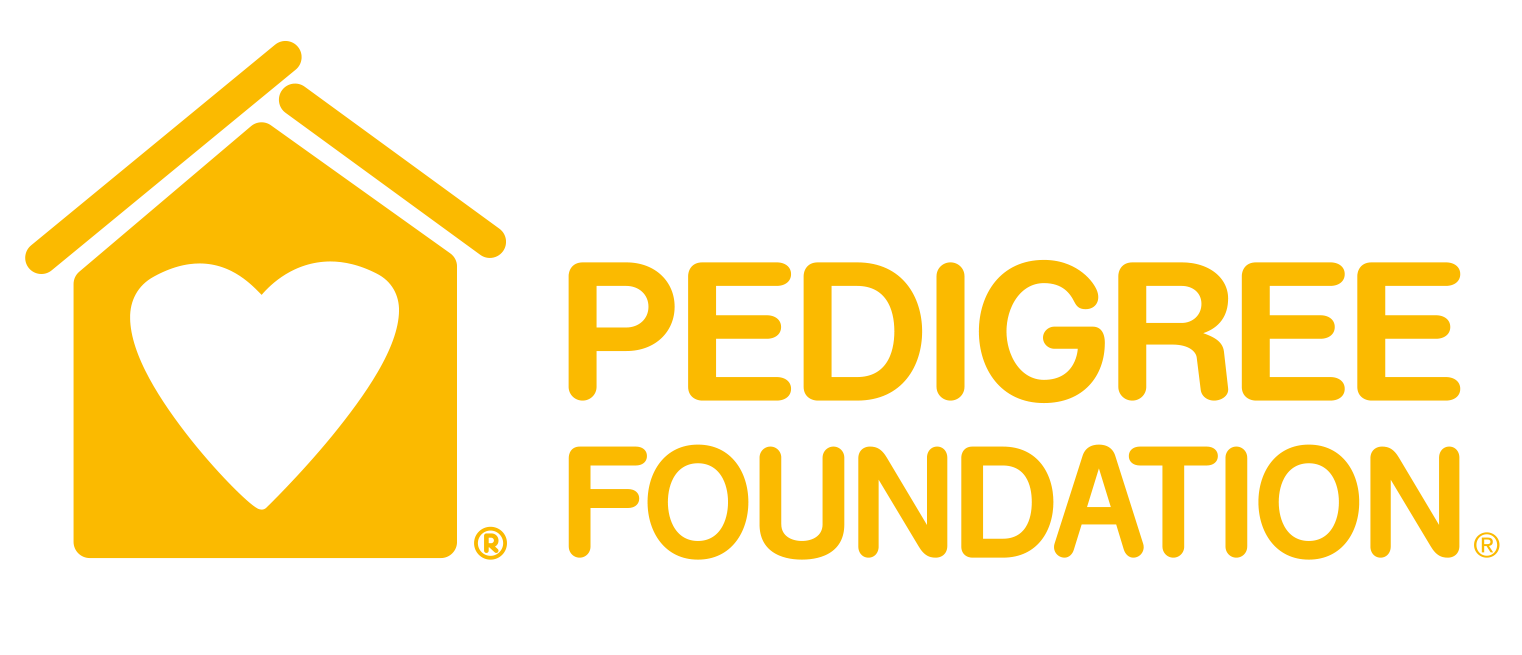We recommend reading the book, Mutual Aid by Dean Spade, which is critically important for anyone implementing mutual aid strategies in animal welfare.
What is mutual aid?
Mutual aid is when people get together to meet each other’s basic needs. Animal mutual aid is when people help each other with pet-related challenges—and in so doing, keep families together and pets out of animal shelters.
For example:
- Lost pets can be returned home by their finders.
- People can rehome their own pets with a little support.
- Pet owners can get help with medical bills and even rent deposits, in order to be able to keep their pets.
Why animal mutual aid now?
Most of the pets who enter shelters can instead be helped in their communities. Always important, there’s a special urgency when animal shelters are stretched for space and other resources.
Mutual aid lets us harness the will of our communities to help, and the result is fewer pets entering shelters and more families staying together!
How do I start an animal mutual aid group?
1. First steps
Find some friends or neighbors who want to start the animal mutual aid group with you. With your initial core team, determine the buildings, blocks, or neighborhoods you will support.
Give your group a name that easily identifies its location and purpose (for example, People Helping Pets of North Dogtown).
From the beginning, you’ll want to establish community norms. Important ones include: Being kind and respectful of others. Being safe, and following local laws. Taking care of each other and respecting people’s privacy.
2. Build your platform and get the word out
Decide how your group will stay connected. Some options are a Facebook page, Nextdoor group, or a simple website.
Set up a couple of ways for people to connect with you. Options include creating intake forms for people to request and give help, a dedicated email address you and your team can access, or asking to be contacted via Facebook messenger. You can also set up a hotline for people to call or text.
Be mindful that some people who need your group’s help, or who want to provide assistance, might not have internet access or be regular users of social media. Make flyers with your group’s information, that you can put up to reach these members of the community. Put your outreach materials in visible places like the grocery store and park bulletin boards.
You can send a press release to local media to get word out, too.
We’ve included sample emails and other communications templates below, that you can use to spread awareness and solicit volunteers.
3. Put together a short guide to non-shelter alternatives
This handy resource should include information you and your community are likely to need when providing or seeking animal mutual aid, including:
- Lost and found pets services and pages: Mission Reunite is a good example. There are probably lost and found pets pages specific to your community, as well. In addition to letting people know about these pages, your animal mutual aid group can create and share social media posts about lost and found pets on your own pages.
- Need for rehoming a pet: Two great websites for self-rehoming a pet are Adopt-a-Pet and Home to Home. And—broken record time; you’ll be hearing this a lot—you can offer to help create social media posts for sharing on local platforms, in addition to putting up a post on your animal mutual aid pages.
- Need for donated pet food and supplies: List local pet food banks, and animal shelters or other organizations that provide free or low cost food and supplies. Put in place a procedure for requesting food and supplies, since this is likely to be a regular need.
- Info for help with veterinary care and other financial assistance: Offer to make a post for someone who needs help paying for veterinary care, to share on the Nextdoor app and other local platforms, as well as on your animal mutual aid pages. Include a picture of the pet and the name of the vet clinic where they are being treated. You can follow a similar procedure for people who need help with pet deposits, and other pet-related financial assistance.
- Temporary boarding: Include links to any organizations that offer emergency fostering, such as local domestic violence shelters. Offer to create and share social media posts relaying the need for a temporary foster. As with veterinary care and pet deposits, you can also help raise funds to cover boarding.
4. Start supporting each other
Now you’re ready to match assistance requests with volunteers!
Be flexible and nimble as you get going. Identify new opportunities to support and take action in helping those in need. Check in regularly with your team and volunteers.
Make improvements to your group, as you see the window to do so. Above all, stay connected and stay adaptable in your quest to help pets and families in your community!
Sample Email and Communications Templates
Below is an email template for you to send to the people in your building, neighborhood, or block inviting them to join the animal mutual aid group you’re starting.
Feel free to copy and paste, and where indicated with [brackets] customize it for your group.
Subject: 👋 Join our [building/neighborhood/block] animal mutual aid group!
Body:
Hi neighbor,
The best thing we can do is come together as a community and look out for one another, including pets! That’s why we’re starting an animal mutual aid group for our [building/neighborhood/block] that provides everyone with the pet-related support and services they need.
Mutual aid groups are informal groups of volunteers like you and me that come together to help those in need. Our aim is to keep families together and prevent pets from going to the animal shelter.
We’ll be coordinating things like pet food donations, helping cover veterinary bills, rehoming pets, emergency fostering, getting lost pets back home to their families, and more.
But it all depends on who joins and what they bring. Please reply to this email if you would either like to:
1. Join the animal mutual aid group
2. Volunteer to support your neighbors and their pets
Looking forward to hearing from you!
Sincerely,
[Name]
Below are a few examples of social media posts that are great for Facebook, Neighborly and other places.
Join an Animal Mutual Aid Group
- Some neighbors and I are starting a volunteer animal mutual aid group to help our community stay connected and support each other by assisting one another with pet-related needs. Are you interested? Do you need help? Message me for details!
- Do you have more time than usual? Reading the news, wondering what to do? Wish you could help your neighbors? Join our animal mutual aid group!
- We’re helping neighbors connect so no one has to face a pet-related crisis alone. Help support each other—message me for details!
Help Your Neighbors
- A few of us started an animal mutual aid group so our neighbors can stay connected. No one should have to face a pet-related crisis alone. We need volunteers to deliver donated pet food, help coordinate donations for veterinary care, take in emergency fosters if a neighbor goes to the hospital, and more. Interested? Msg me for details!
*letters adapted from AARP Community Resource creation toolkit








